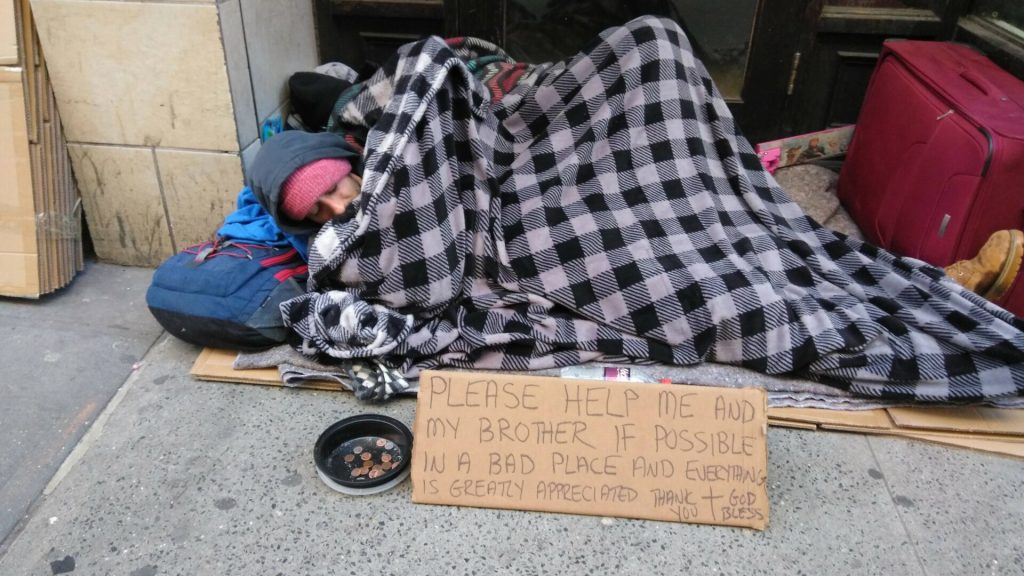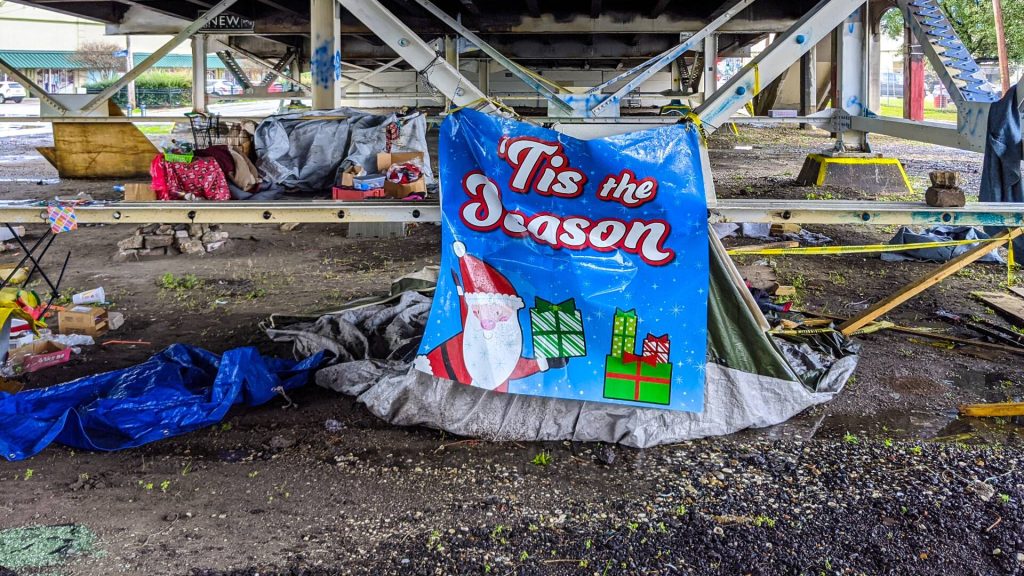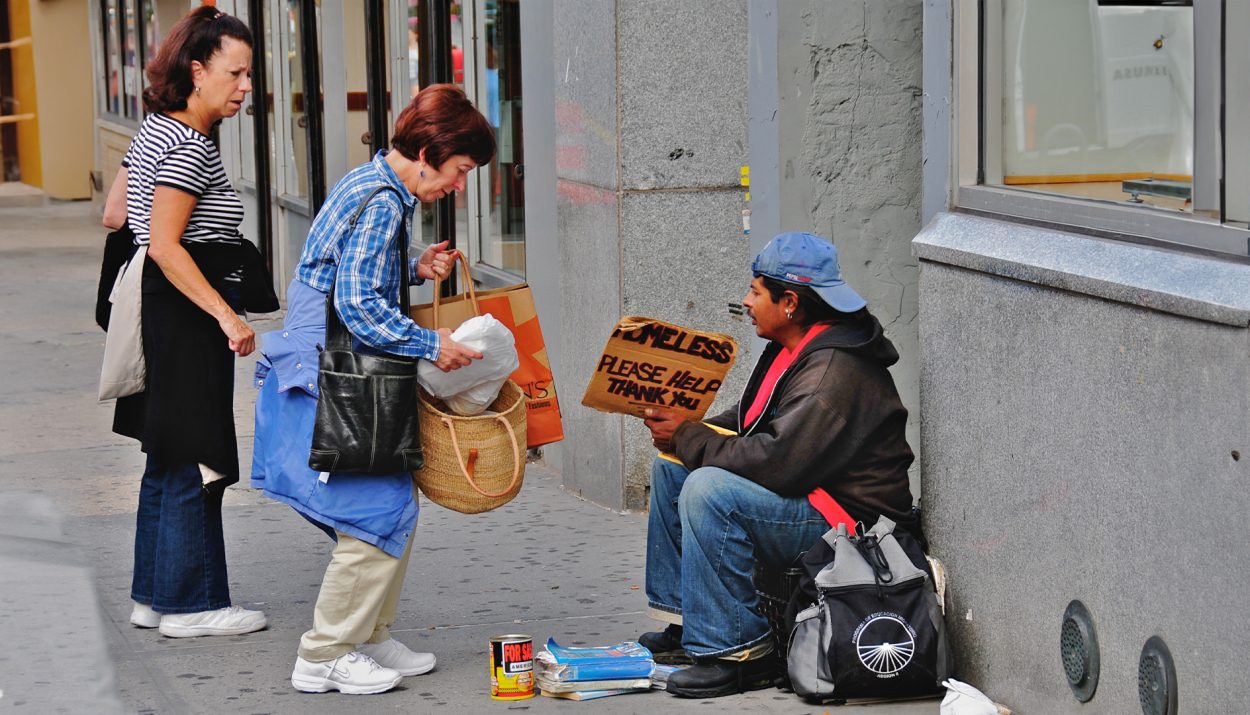Individuals who become homeless often find themselves at the mercy of circumstances far beyond their personal control. Nobody wants to be homeless, despite the prevalent opinion that those who are homeless are so because of their own poor choices or because it was something they chose. Prejudice against the homeless is insidious in society and politics, and a new bill out of California only drives that point home.
A Bipartisan State Bill
A bipartisan bill out of the state Senate in California has released new guidelines for the state, banning homeless encampments near “sensitive community areas.” The ban would apply statewide, and passed with wide support from both parties in the state legislature.

The bill, specifically, would ban people from “sitting, lying, sleeping or store, using, maintaining or placing personal property upon a street or sidewalk” if a homeless shelter is available instead.
Banning Homeless People From Public Schools
The bill also bans people from camping within 500 feet of a public or private school, open space or a major transit stop. By nature, this removes many places that homeless encampments tend to form, including public parks and under highway bridges.

If caught, individuals who violate the new laws could be charged with a misdemeanor or infraction. According to the bill’s sponsors, though, it would be up to local officials to determine how to enforce the violations of the bill.
The Intent is Compassion
Sponsors of the bill claim that the purpose of the bill is to compassionately address the homelessness problem in a state that has one of the highest rates of homelessness in the country. In 2023, nearly 200,000 Californians suffered from homelessness at some point during the year, making the issue a pressing one.

In addition to addressing the homelessness crisis, though, the bill would also protect areas of public interest. “What we are trying to do is compassionately clear encampments near areas that are sensitive to the public, and that the public needs to have safe access to,” Senator Brian Jones said in an interview.
It Falls Short of the Mark
A separate interview held with Catherine Blakespear, a Democrat who cosponsored the bill, saw her saying, “It is not compassionate for us to have people dying on the streets in front of us and in our public spaces while we walk by them.” According to her, the bill is meant to address this concern.

Unfortunately, the opinions of these cosponsors relies on fear mongering regarding the homeless. The idea that unhoused people are a danger to the public or in danger of dying in front of pedestrian’s eyes is a common fear tactic from those prejudiced against the unhoused, and often, measures that come from these tactics do not bode well.
Localities Would Need Their Own Rules
The bill, which was introduced on February 5, would require law enforcement to give “verbal or written information regarding alternative locations to sleep, homeless and mental health services, or homeless shelters in the area.”

Each locality would be expected to have its own procedures and rules regarding what to do with someone’s property once they were removed from a homeless encampment. By nature, these removals do not allow individuals to gather their things before they’re herded away, meaning that homeless people are often very insecure as far as money and possessions.
Bad Press for California Homeless Shelters
This new bill comes as some of California’s homeless shelters have been under fire in recent years, mired in controversy and allegations from civil rights groups of poor conditions. This includes rodent and bedbug infestations in the buildings, filthy bathrooms, and harassment.

In 2019, the American Civil Liberties Union accused Orange County shelters of “unsafe and unsanitary living conditions”. discrimination and abuse,” and “deprivation of fundamental human rights.” This is a result of both complaints from people who stayed there and private investigations.
Mistrust of the System
Following the report, Orange County released a statement to local news outlets. They stated, at the time, that local officials are
“committed to ensuring our emergency shelters are safe for all our clients. Each emergency shelter has its own provider and complaint process.”

In the years since this report, the status of homeless shelters in the state doesn’t seem to have improved. Many homeless individuals in California have a deep mistrust of the system that is meant to help them, and would prefer to sleep out in a homeless encampment than seek shelter in a state-sanctioned shelter.
What about Shelters Now?
When asked about how current shelter conditions would impact the implementation of the new bill, Bakespear and Jones both pointed to tactics used in San Diego under the Unsafe Camping Ordinance.

The city of San Diego opened safe camping sites so that people could choose to continue to camp, with access to bathrooms, food, water, and social workers that would held individuals get back on their feet. Both Jones and Blakespear hope other California cities will follow suit in order to support the goal of their bill.
Other Initiatives In the Works
Other initiatives are currently in the works to attempt to address the homelessness crisis in California. Prop 1 – which goes up for a vote in March – would adjust state budgeting to create supportive housing for people with severe mental illness. Governor Newsom also announced in 2023 that several vacant office buildings in Sacramento would be converted to affordable housing.

Rising housing costs make homelessness a terrifying potential reality for many people, and particularly many Californians. While the measures proposed to address the housing crisis are far from perfect, they are a step in the right direction to open the conversation regarding homelessness. Better measures need to be crafted, but a conversation is a good first step.






